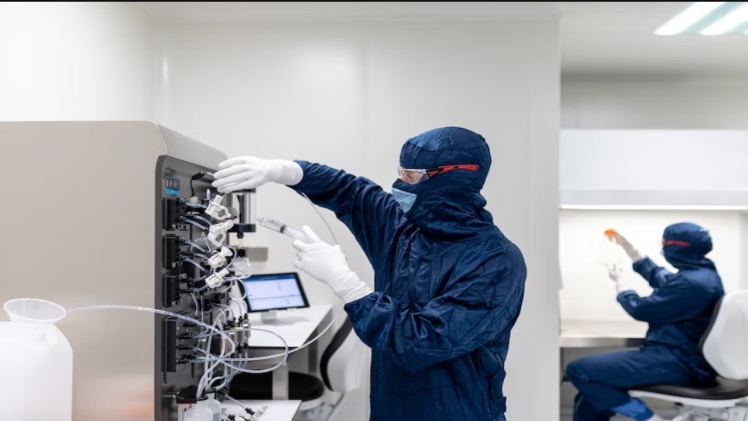Cleanrooms are specialized environments used in a variety of industries, including pharmaceuticals, semiconductors, and biotechnology, where the level of contamination is controlled to very low levels.
The global cleanroom technology market is further estimated to grow at a Compound Annual Growth Rate of 5.4% from 2021 to 2028. This growth is driven by the increasing demand for cleanroom technology in the pharmaceutical, semiconductor, and biotech solutions industries, as well as the need for advanced contamination control techniques in these industries.
Contamination control is a critical aspect of cleanroom technology, as even small amounts of contaminants can have a significant impact on the performance and reliability of products or research. In this article, we will discuss the various techniques and best practices for contamination control in cleanrooms.
Contamination Sources
Contamination in cleanrooms can come from both external and internal sources. External sources include the air, people, and equipment entering the cleanroom, while internal sources include materials and processes used within the cleanroom.
External sources of contamination include:
- Airborne particles: A major source of contamination in cleanrooms is the presence of particles in the air. These particles can come from various sources, such as construction, HVAC systems, and outside air.
- People: People entering the cleanroom can also introduce contamination through the shedding of skin cells, hair, and clothing fibers. An article published in Science Daily explains humans shed 200,000,000 skin cells every hour.
- Equipment: Equipment entering the cleanroom can also introduce contaminants, such as dust or particles that may be present on the surface of the equipment.
Internal sources of contamination include:
- Materials: The materials used in a cleanroom can also be a source of contamination. For example, powders or liquids used in the manufacturing process can generate particles that can contaminate the cleanroom environment. That’s why it’s best to use a reputable vendor for cleanroom construction.
- Processes: Certain manufacturing processes can also generate contaminants, such as welding or soldering.
It is worth noting that the sources of contamination in a cleanroom can vary depending on the specific industry and application. Understanding the sources of contamination is crucial for implementing effective contamination control measures.
Contamination Control Technique
Contamination control in cleanrooms is achieved through a combination of techniques, including air filtration and ventilation, personnel and equipment controls, material controls, process controls, and monitoring and testing. These techniques work together to reduce the level of contaminants in the cleanroom environment and maintain the desired level of cleanliness.
- Air filtration and ventilation: One of the most important techniques for controlling contamination in cleanrooms is air filtration and ventilation. Cleanroom air is filtered to remove particles and microorganisms, and it is then circulated through the cleanroom to ensure a consistent level of cleanliness.
According to the United States Environmental Protection Agency, HEPA filters are the most common type of air filter used in cleanrooms and are able to remove particles with an efficiency of 99.97%.
- Personnel and equipment controls: Controlling the movement of people and equipment into and out of the cleanroom is crucial for maintaining a clean environment. This can include measures such as gowning protocols, shoe covers, and limits on the number of people allowed in the cleanroom at one time.
- Material controls: Controlling the materials used within the cleanroom is also important for maintaining a clean environment. This can include measures such as storing materials in clean containers, using clean tools and equipment and minimizing the use of powders and liquids.
- Process controls: Controlling the processes used within the cleanroom is also important for maintaining a clean environment. This can include measures such as using clean equipment and tools, minimizing the use of powders and liquids, and implementing procedures to minimize the generation of particles.
- Monitoring and testing: Regular monitoring and testing are crucial for ensuring the effectiveness of contamination control measures. This can include measures such as particle counting, microbiological testing, and environmental monitoring.
Best Practices for Contamination Control
Best practices for contamination control in cleanrooms include implementing and maintaining a contamination control program, staff training and education, regular monitoring and testing, and continuous improvement. These practices work together to ensure the effectiveness of contamination control measures and maintain the desired level of cleanliness in the cleanroom environment.
- Implementing and maintaining a contamination control program: Having a well-defined and regularly updated contamination control program is crucial for ensuring the effectiveness of contamination control measures.
This program should include procedures for controlling the movement of people and equipment, controlling materials and processes, and monitoring and testing the cleanroom environment.
- Staff training and education: Training and educating staff on the importance of contamination control and the procedures they need to follow is crucial for maintaining a clean environment.
- Regular monitoring and testing: Regular monitoring and testing of the cleanroom environment are crucial for ensuring the effectiveness of contamination control measures. This can include measures such as particle counting, microbiological testing, and environmental monitoring.
- Continuous improvement: Continuous improvement is crucial for maintaining the desired level of cleanliness in the cleanroom environment. This can include regularly reviewing and updating contamination control procedures, implementing new technologies and techniques, and monitoring the effectiveness of contamination control measures over time.
Conclusion
In conclusion, contamination control is a critical aspect of cleanroom technology.
Effective contamination control in cleanrooms is achieved through a combination of techniques, including air filtration and ventilation, personnel and equipment controls, material controls, process controls, and monitoring and testing.
By understanding the sources of contamination, the techniques used to control contamination, and the best practices for maintaining a cleanroom environment, we can ensure the effectiveness of cleanrooms and the quality of the products or research they support.

